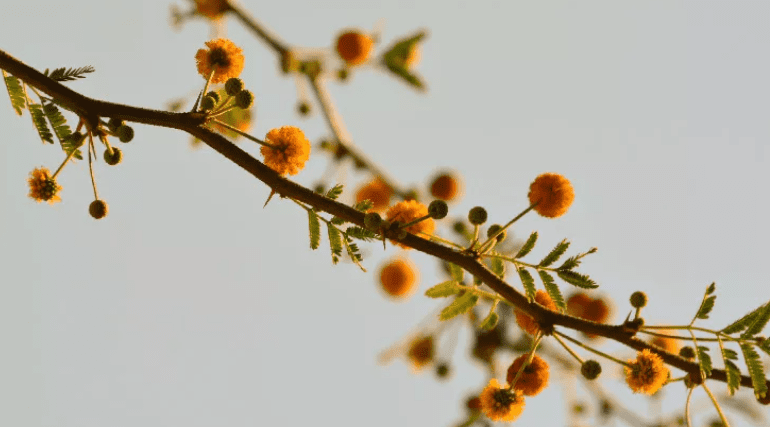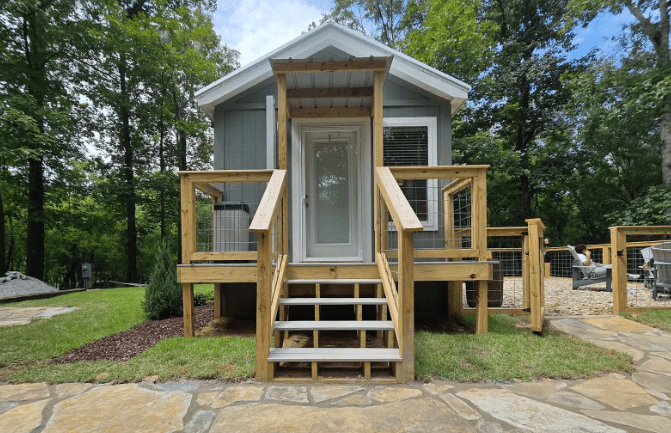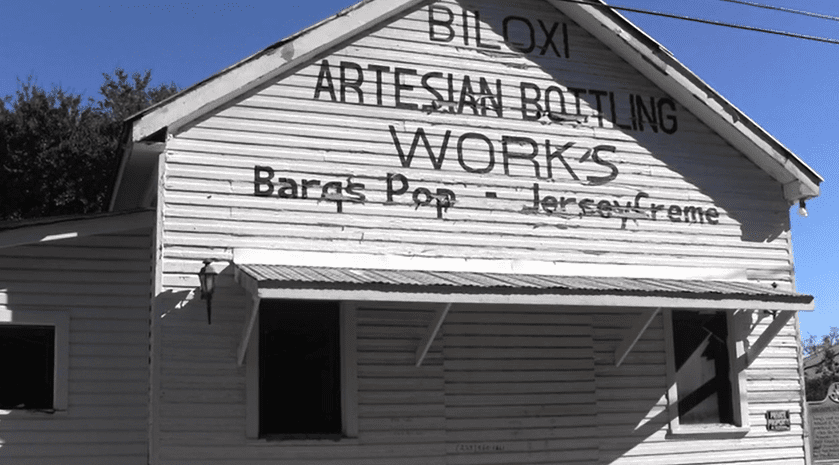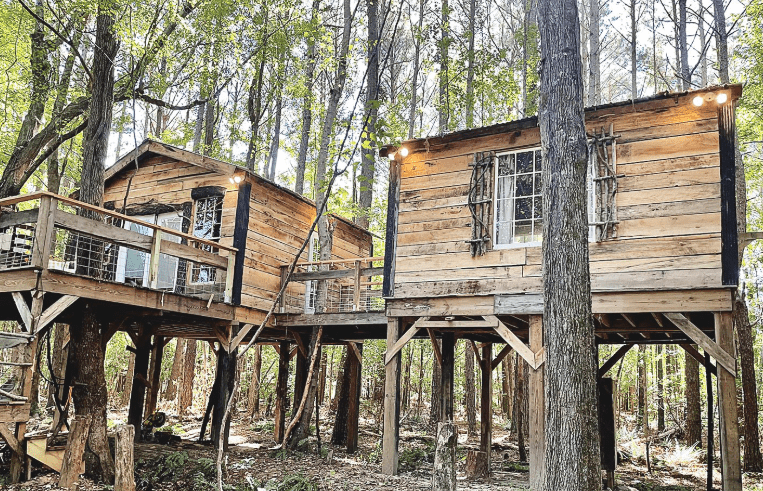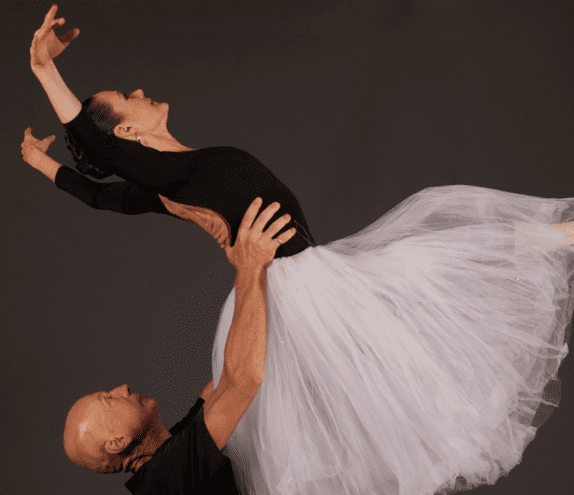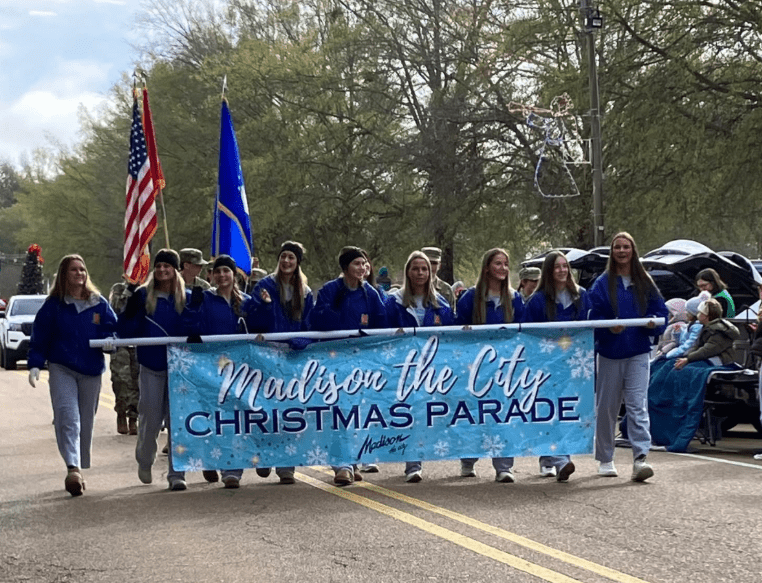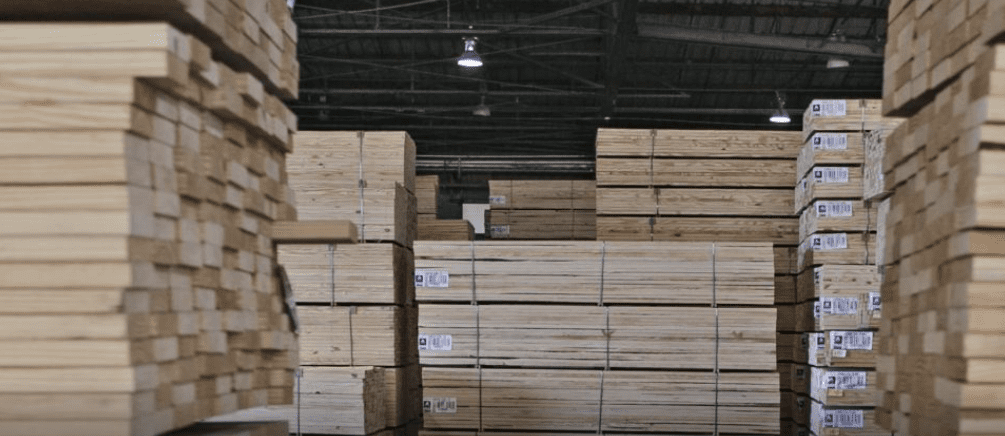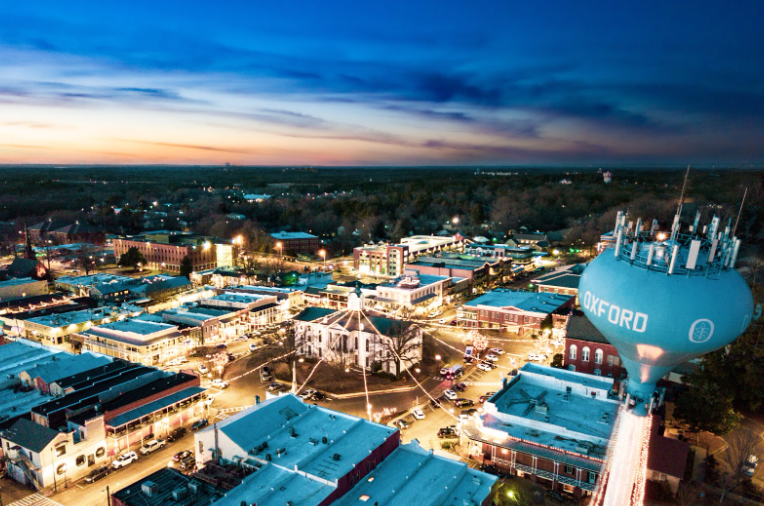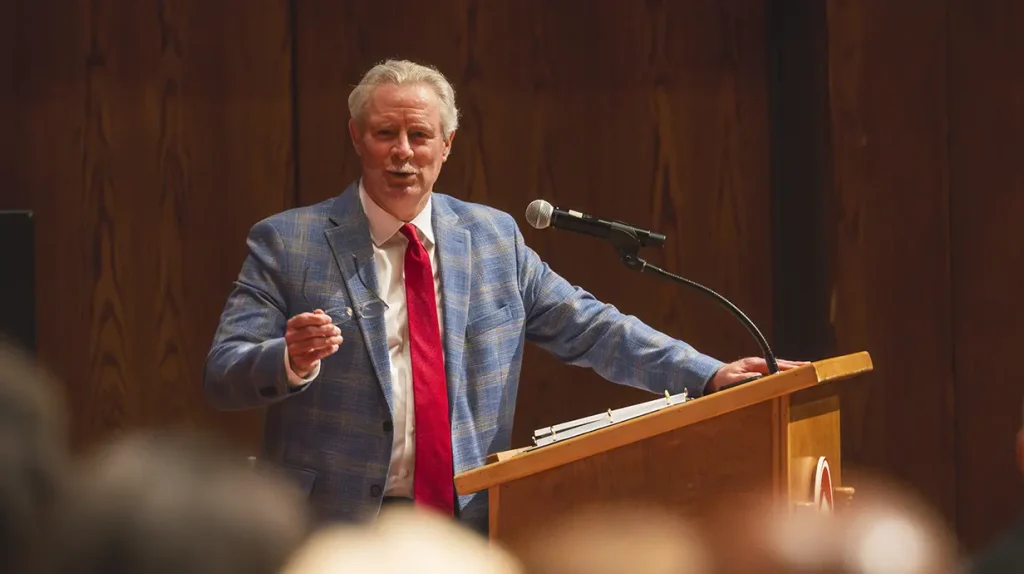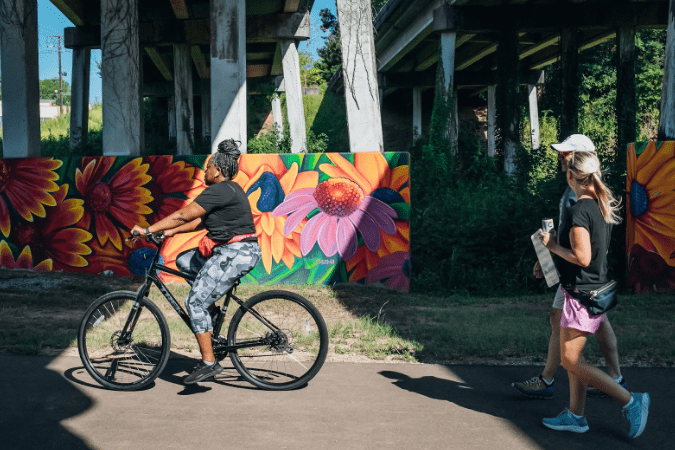
- Great cities, while much more than simply being walkable, are certainly not less than that.
Motorists traversing I-55 in Jackson in recent months may have noticed a brightly colored fixture along the Waterworks Curve in front of the J.H. Fewell Water Treatment Plant. Unveiled in November 2024, a new sign at the entrance to the Museum Trail capped off the first few of what will eventually be several phases in the trail’s development.
The Museum Trail itself is not brand new to the city, per se. In fact, city residents may be surprised to learn that the trail has existed in one form or another since the 1930s. For many years, the Gulf, Mobile and Ohio (GMO) railroad came through Jackson. Sections of this same railroad still exist behind the Old Capitol building and abandoned over the Pearl River just over the Rankin County line. GMO caboose #2951 is on display in downtown Madison.
The rail line was decommissioned in the late 1990s, but Belhaven neighborhood residents and others kept most of the line just clear enough for hiking and other, similar activities. By 2009, Clay Hays and David Pharr, two respected community leaders, and literal “trailblazers,” were envisioning a multi-use greenway that would stretch for miles. Hays, a cardiologist at the Jackson Heart Clinic, and Pharr, an accomplished business attorney, both have an extensive community service background.
The parcel of land on which the trail now sits was eventually acquired by the Greater Belhaven Neighborhood Foundation. With support from numerous public and private partners, the Museum Trail—initially termed the Museum to Market Trail—was established and opened its first paved connector with the Mississippi Farmers Market on one end and the Belhaven neighborhood on the other. The Waterworks Connector was finished in 2023. The new sign is far from a cherry on top of this work. It represents just one incremental step forward in the journey toward a more walkable Jackson. Spearheaded now by Great City Mississippi and the Jackson Heart Foundation, the project is helping leaders in many other organizations envision a city that is more comprehensively connected, healthy, and whole. Indeed, the Museum Trail has already been part and parcel to the renewal of the Belhaven neighborhood.
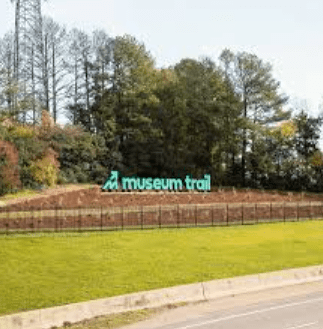
Several additions to the trail are still in the early stages of planning and development. This spring, the Garden Club of Jackson will plant native flowers and grasses around the sign, alongside those already installed by SoHo Landscaping. New educational signage is also in the works. Moreover, planned trail extensions include those that would connect Belhaven to Downtown, Jackson State University, and West Jackson, providing Downtown and other nearby residents with a denser and more walkable living experience. A network of greenways aimed at more fully connecting Jackson to the Pearl River may also be attached to the Museum Trail.
The Museum Trail is a “rails-to-trails” greenway not unlike many others throughout the country that have been catalysts for economic progress and renewal in urban areas. Research has also shown that urban greenways can increase property values and attract new businesses. Atlanta’s Beltline is one good example of this. A bit closer to home, Hattiesburg’s Longleaf Trace has even earned a spot in the Rails to Trails Conservancy (RTC) Hall of Fame. Trails also encourage physical activity, which can reduce rates of obesity and heart disease—two metrics in which Mississippi has a less-than-favorable ranking. This is especially important to the Jackson Heart Foundation and is one reason why the nonprofit played a role in bringing a first-of-its-kind fitness court to Belhaven Heights Park, which was also unveiled last year. The fitness court sits right next to the Museum Trail.
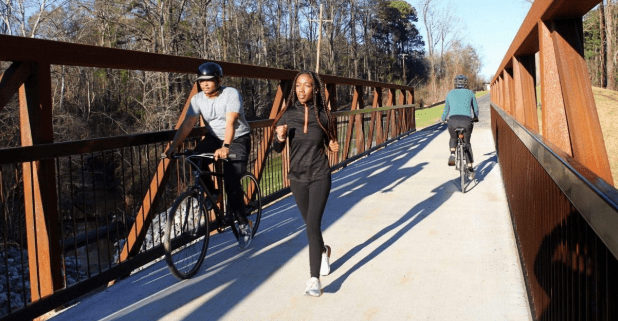
It isn’t hard to see how trails can help to create more vital urban communities where people want to live, work, and play. They help us to see in real-time how the answer to so many of the hardships faced by cities like Jackson really boils down to one thing: connection. Projects like the Museum Trail help us in our search for a collective identity because they connect us to one another. Great cities, while much more than simply being walkable, are certainly not less than that.
